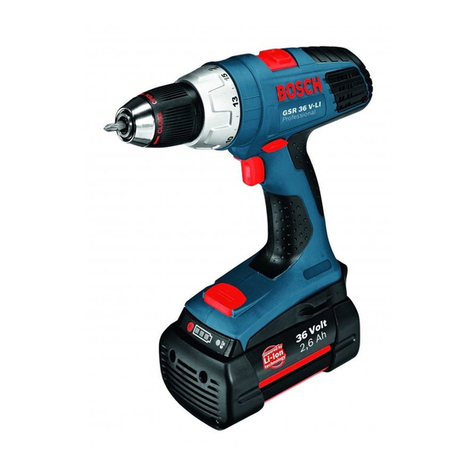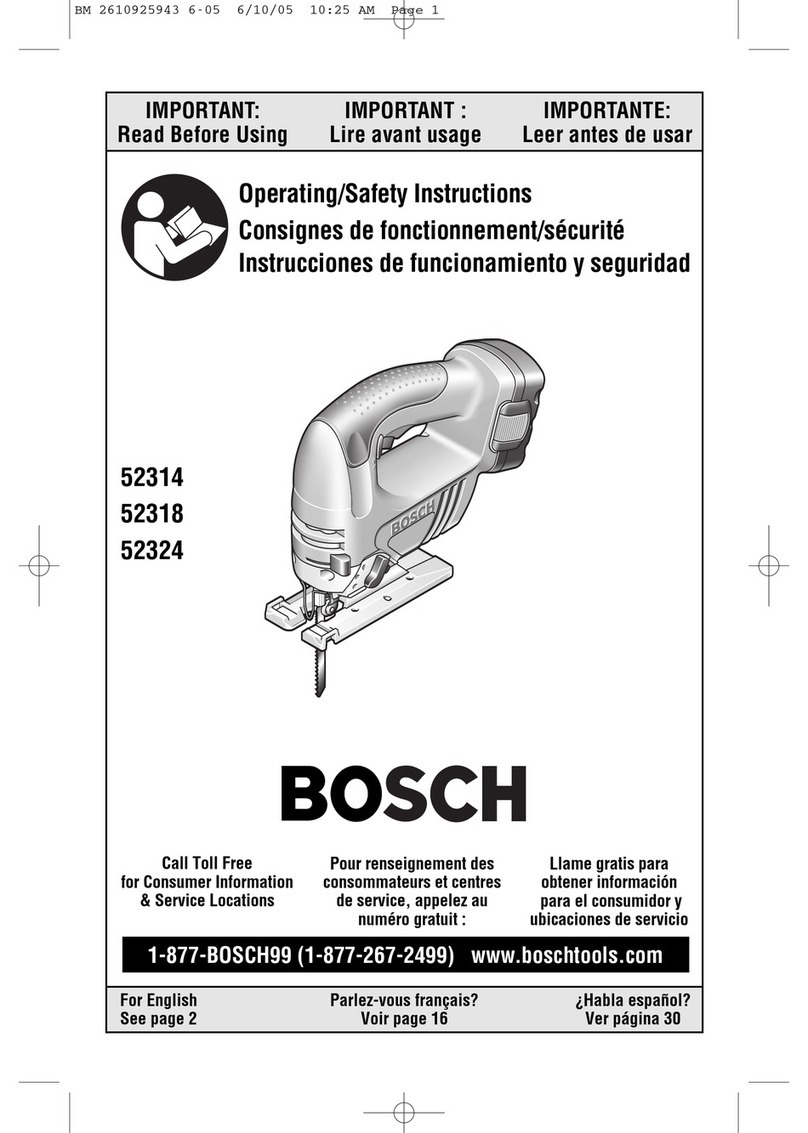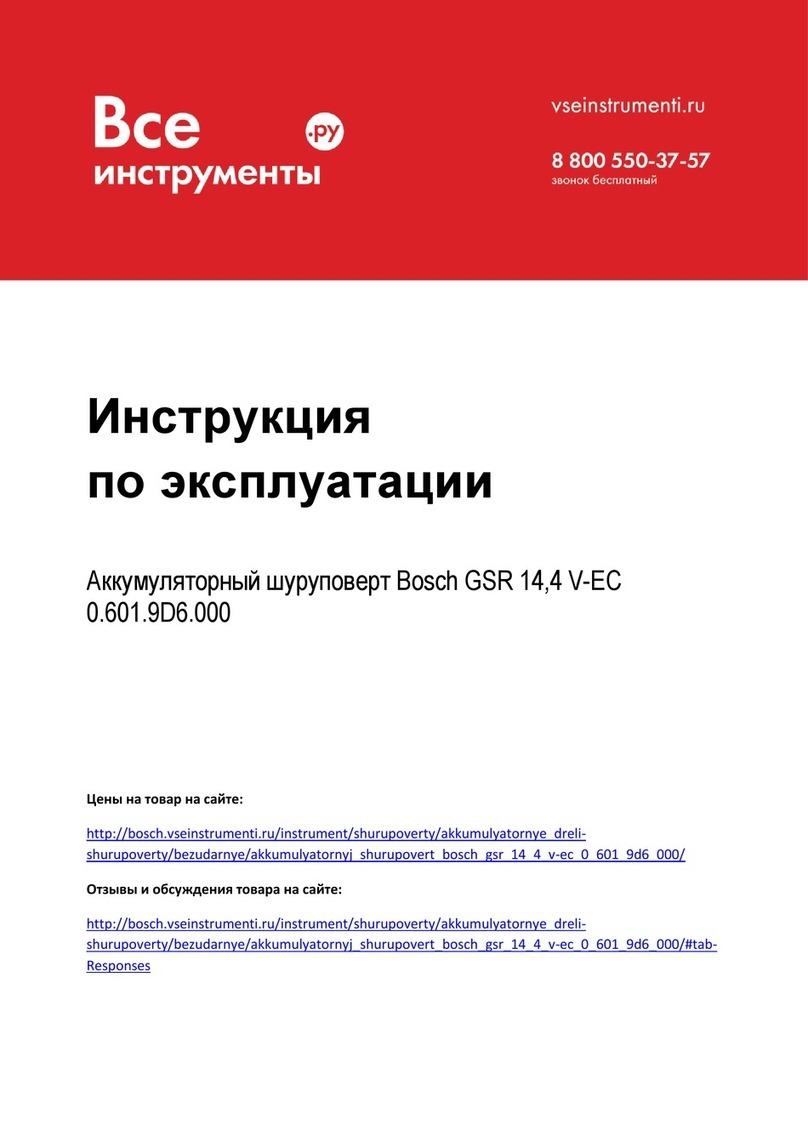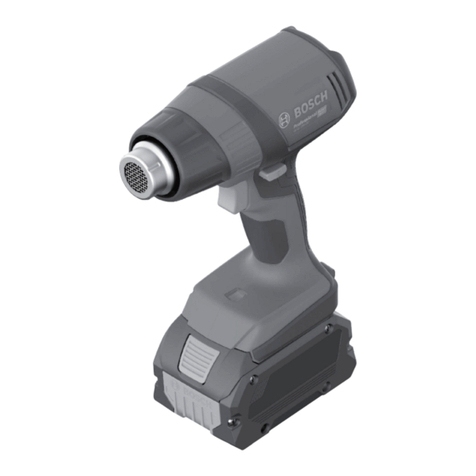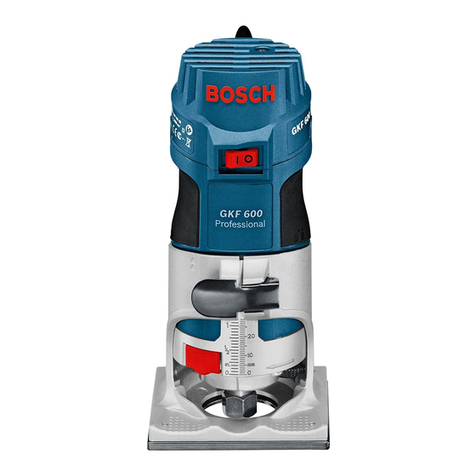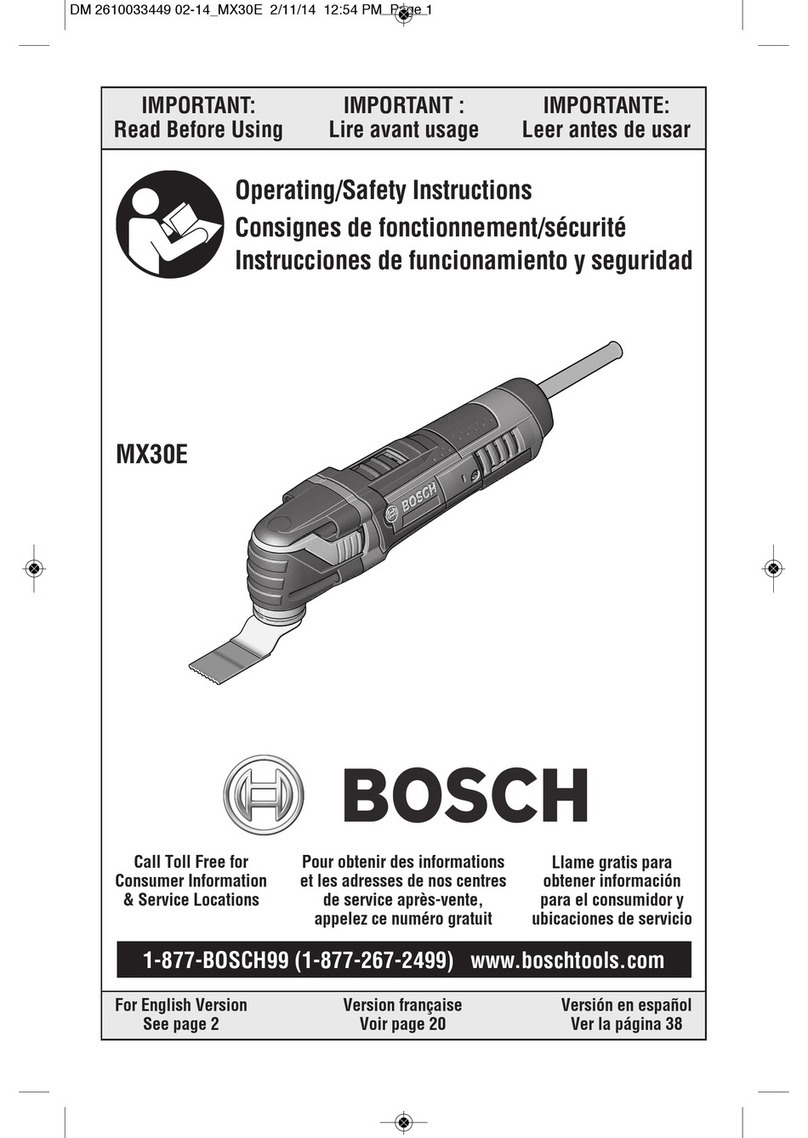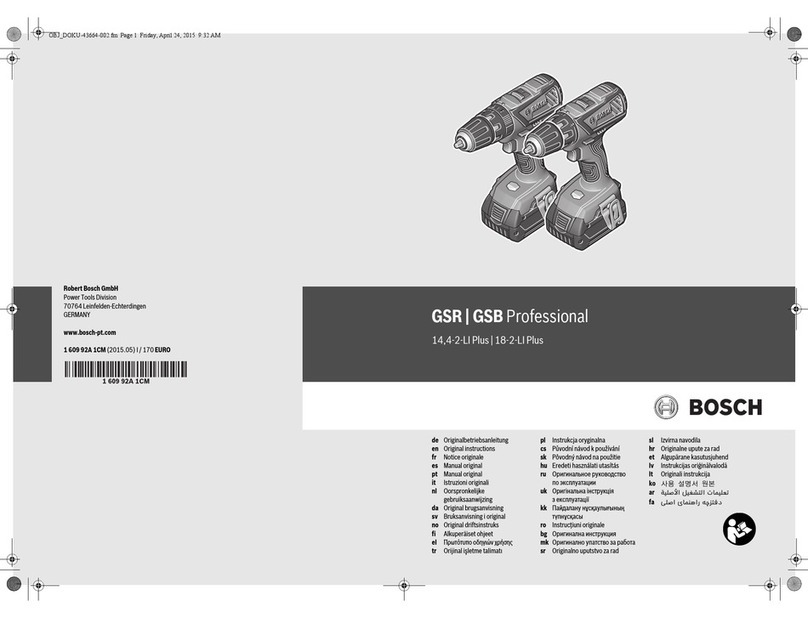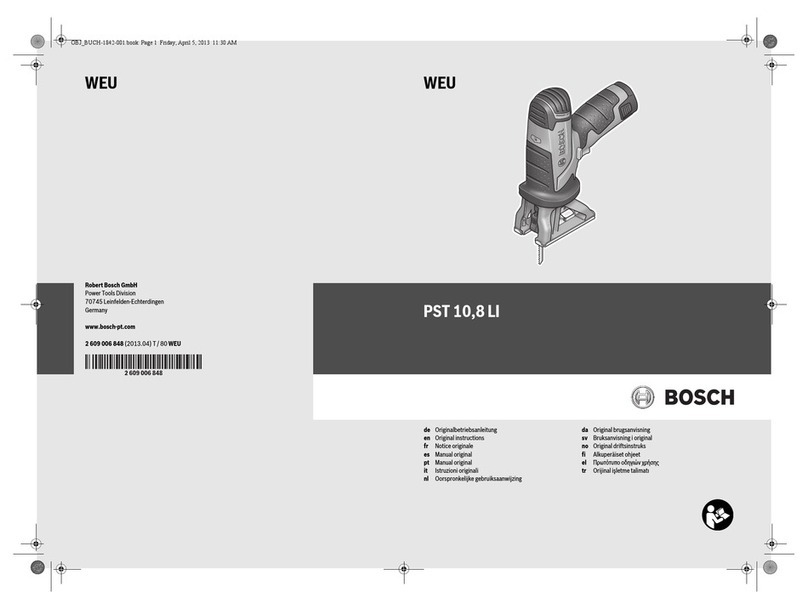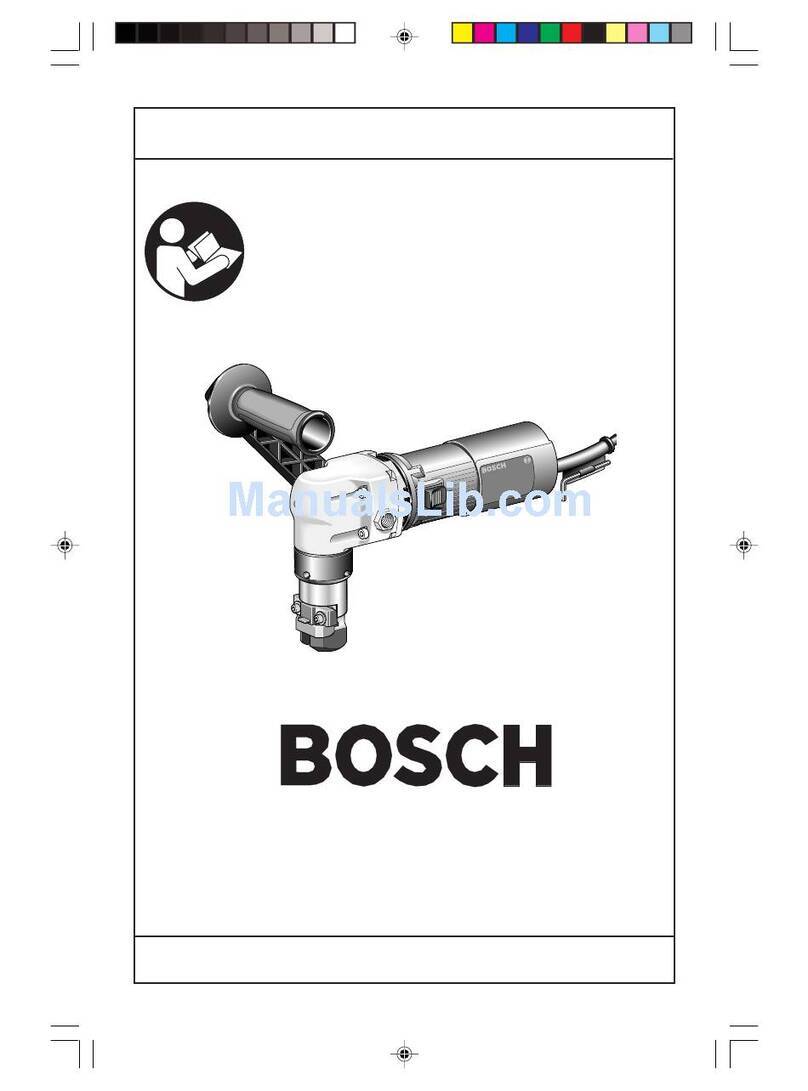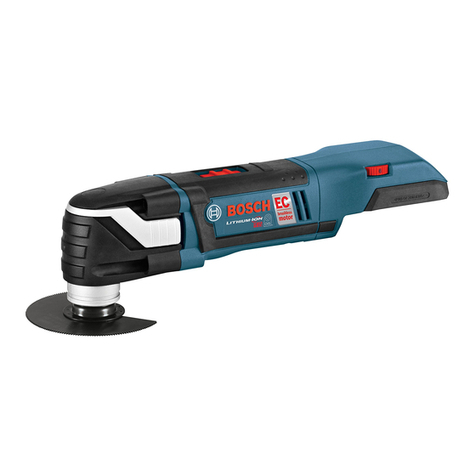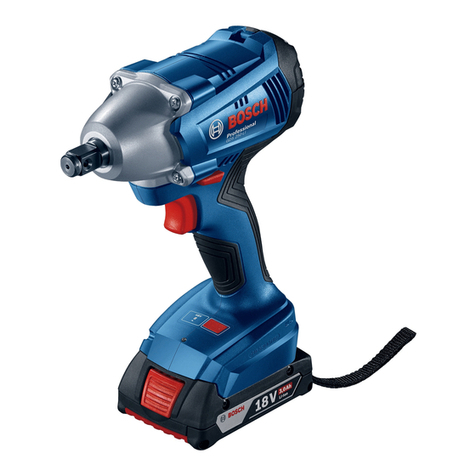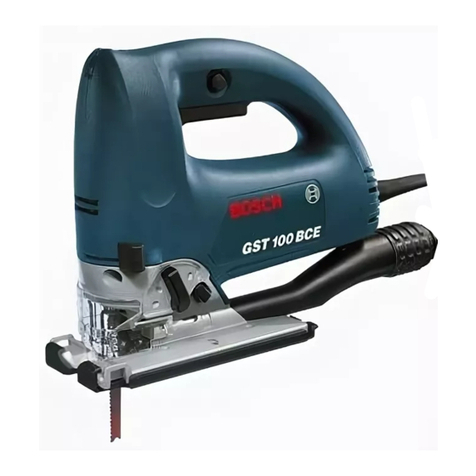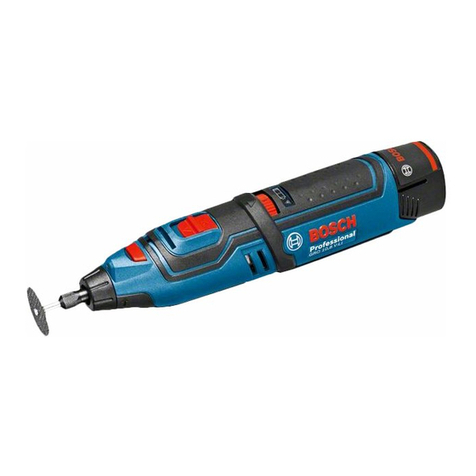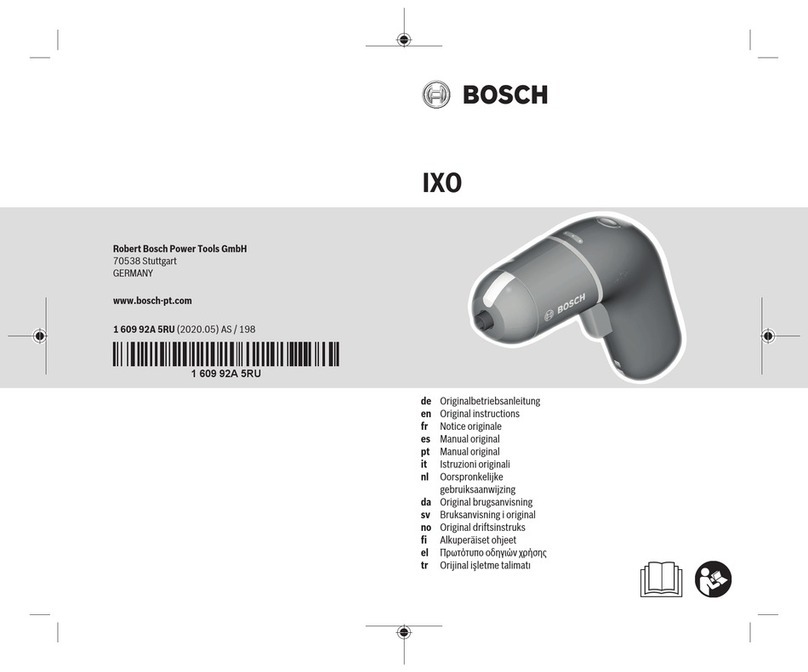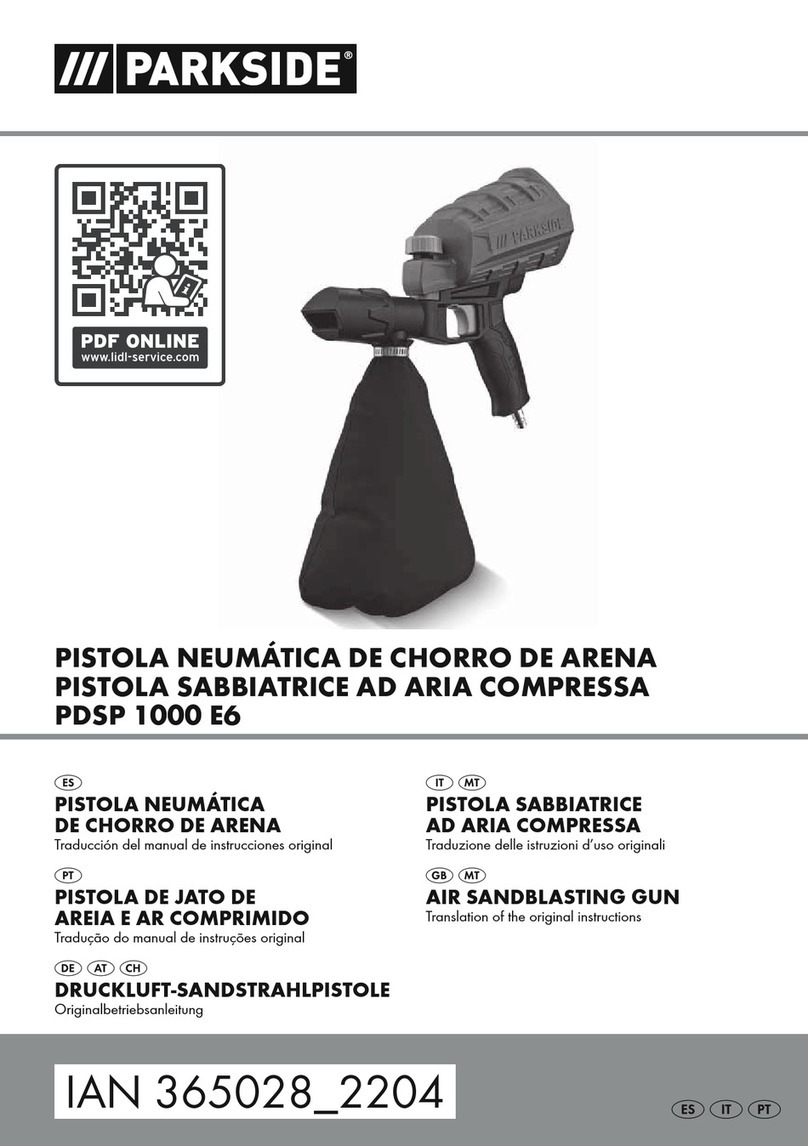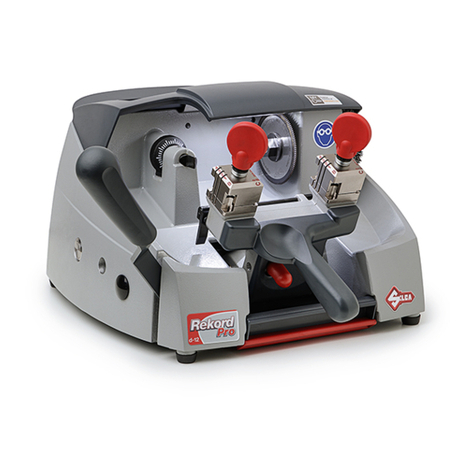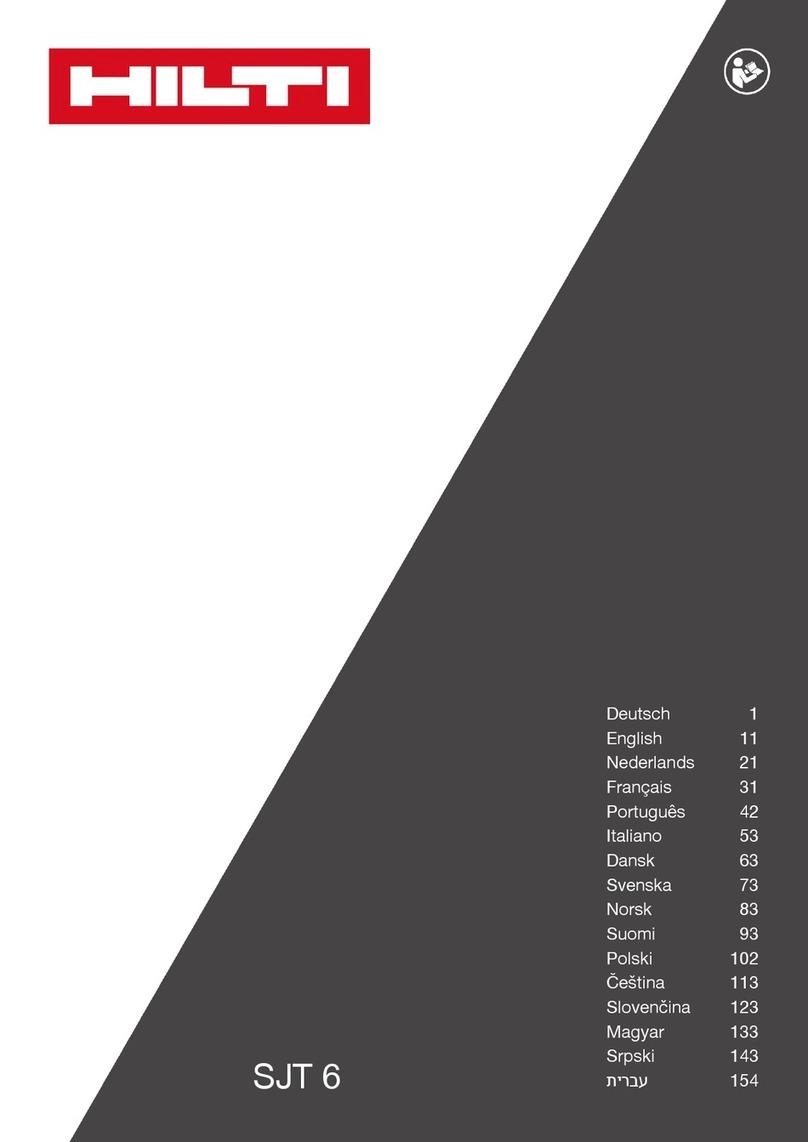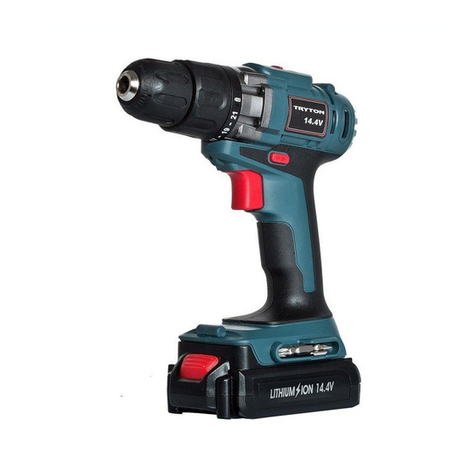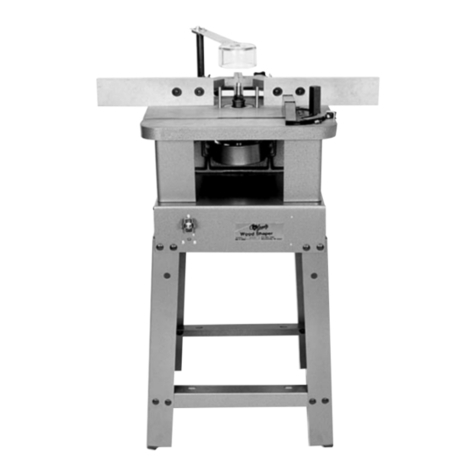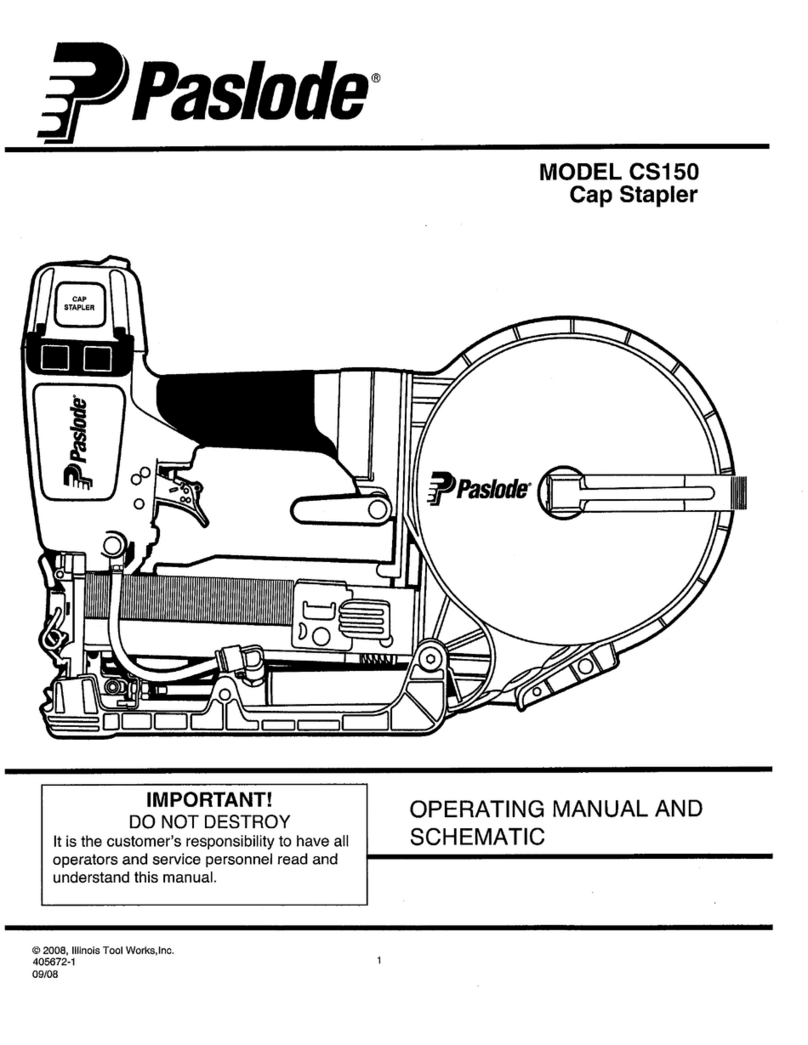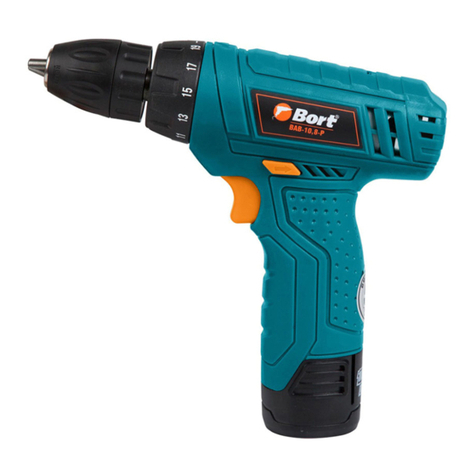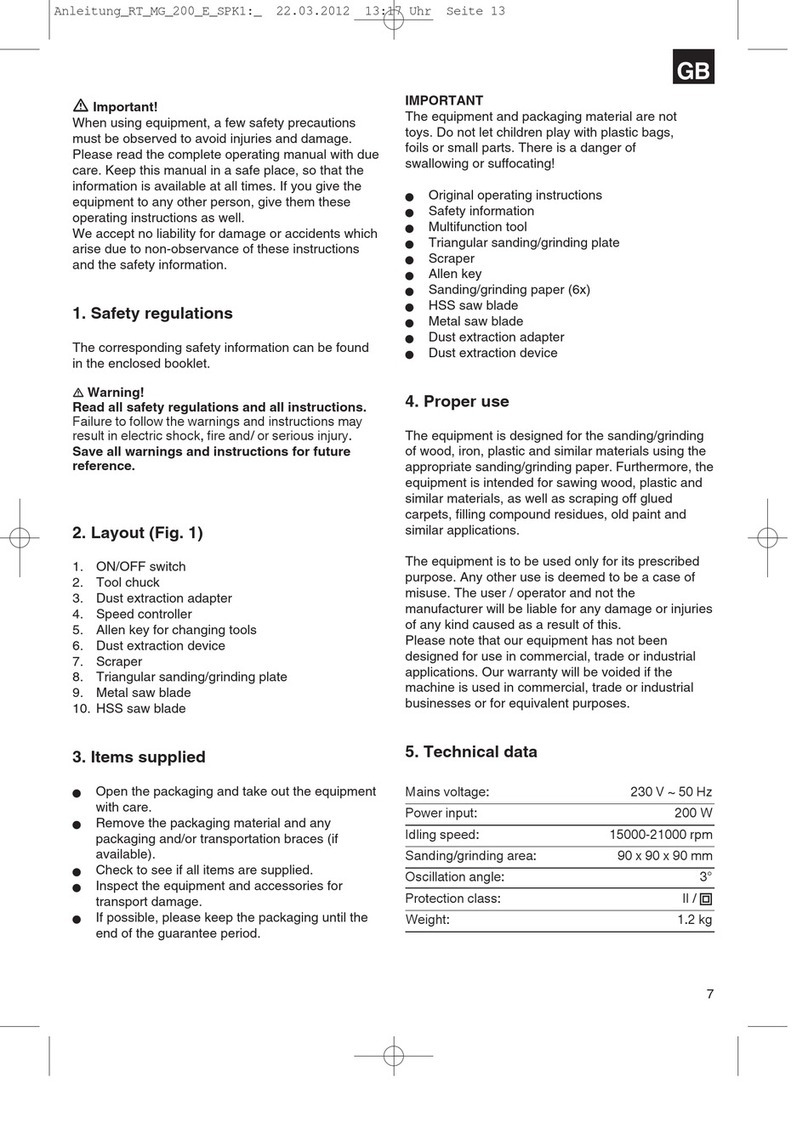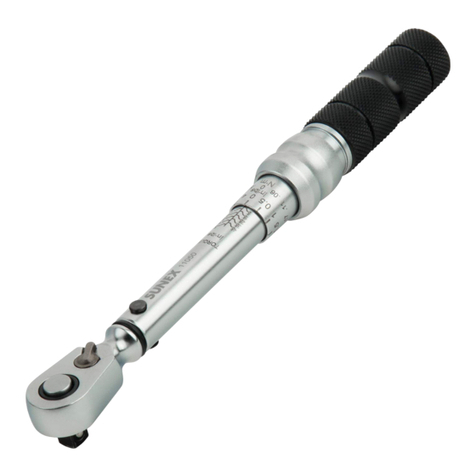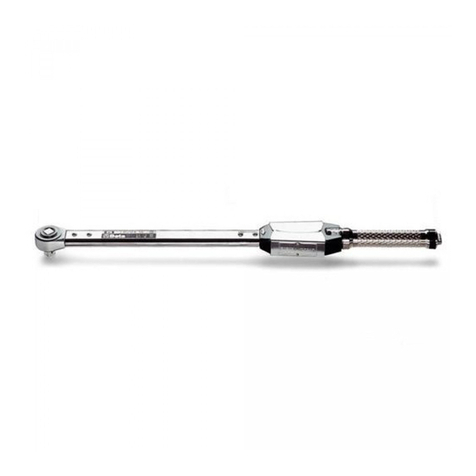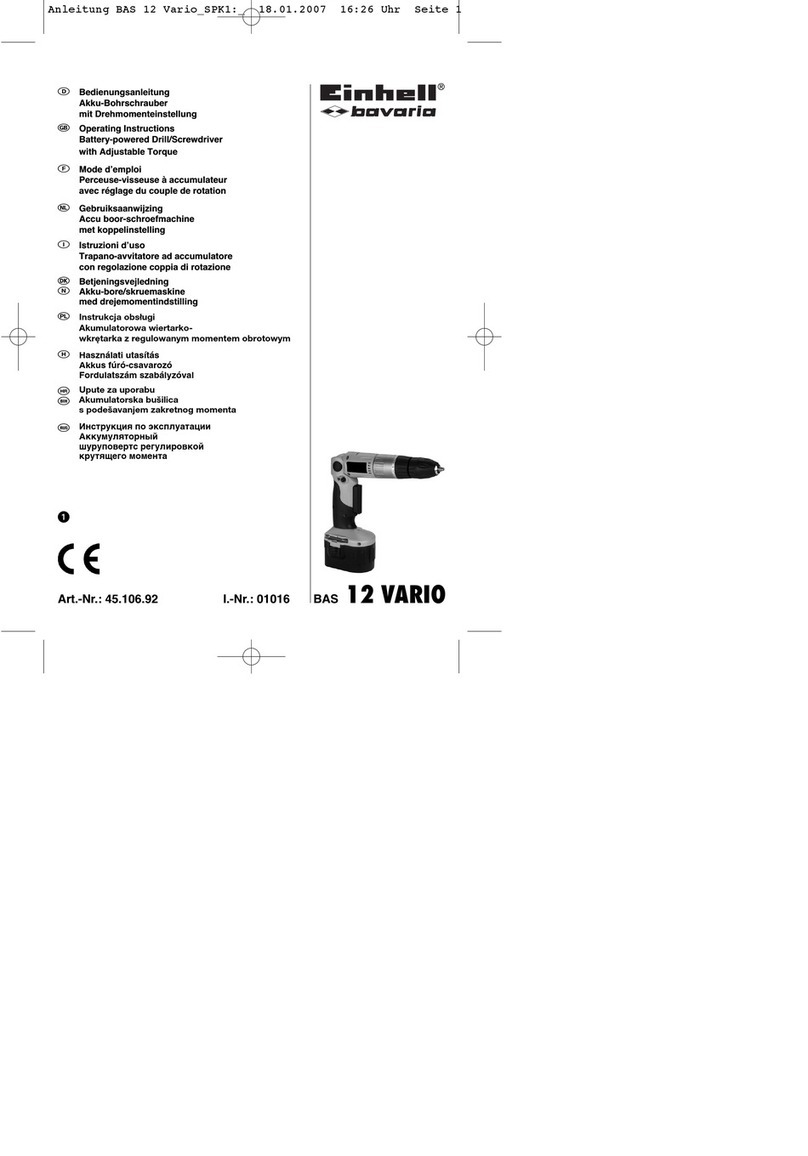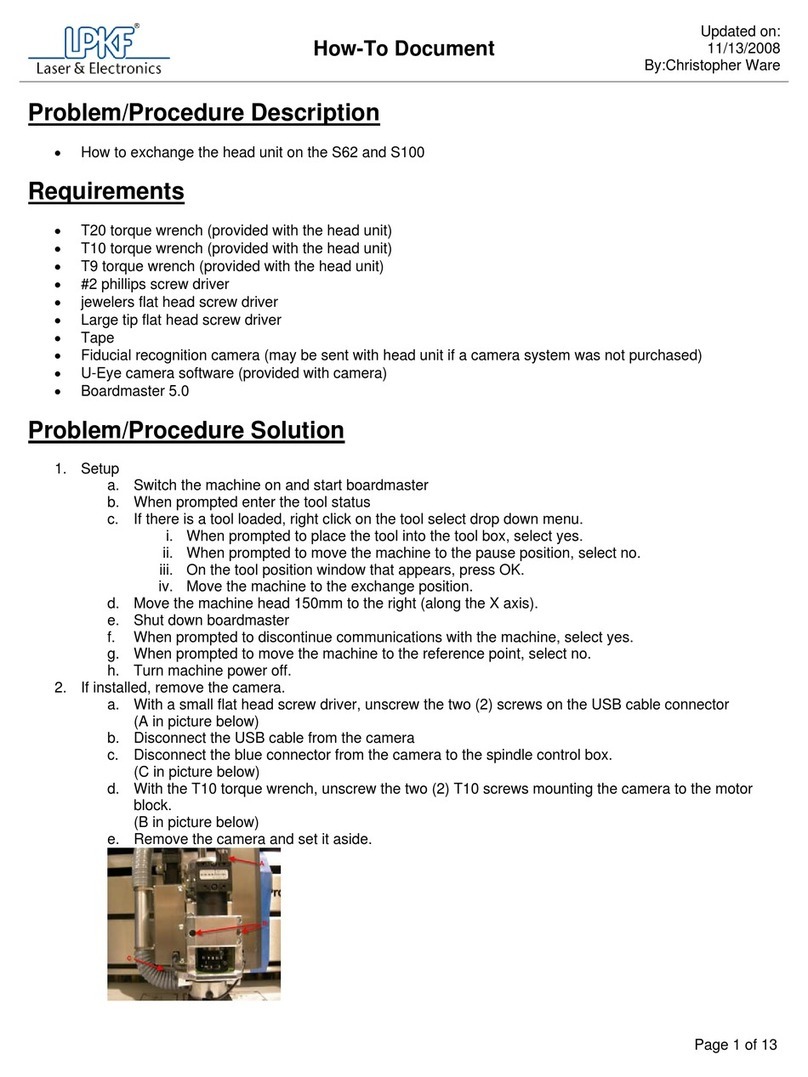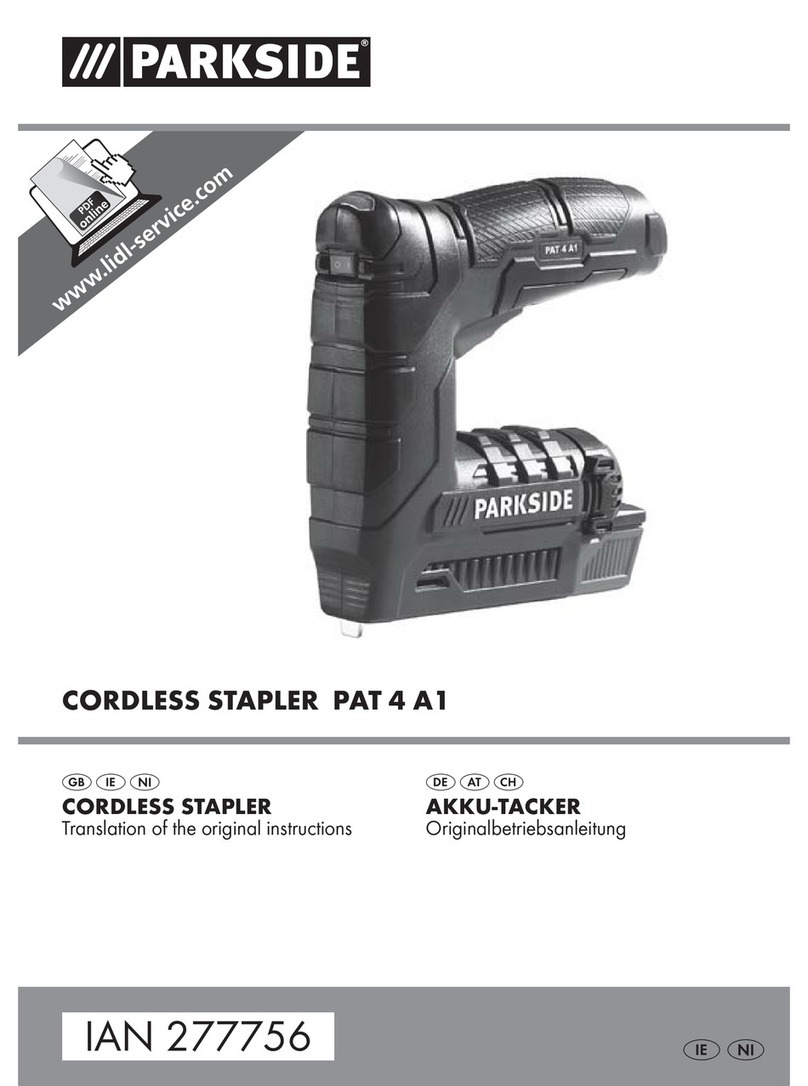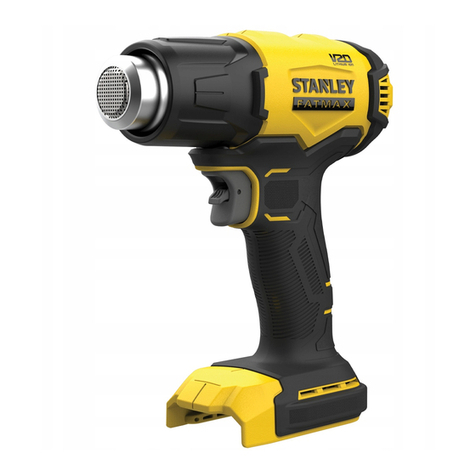12 | English
1 609 92A 1Z8 | (18.1.16) Bosch Power Tools
Thermal-protection shut-off: In case of overheating (e.g.
dueto airbuild-up),thepowertoolautomaticallyshuts off the
heating system, but the blower will continue to run. When the
power tool has cooled down to the operating temperature,
the heating system is automatically switched on again.
Switching Off
To save energy, only switch the power tool on when using it.
PHG 500-2/PHG 600-3: Press the On/Off switch 4to posi-
tion 0.
PHG 630 DCE: Press the On/Off switch 5to position 0.
PHG 600-3/PHG 630 DCE: After working for a longer time
with high temperature, allow the power tool to cool down by
running it in the cold air setting Ibefore switching off.
Setting the Air Flow and Temperature
(PHG 500-2/PHG 600-3)
WiththeOn/Offswitch4,youcanselectbetween different air
flows and temperature combinations:
PHG 600-3: The cold air setting Iis suitable for cooling a
warmed workpiece or for drying of paint. It is also suitable for
cooling the power tool before placing it down or when chang-
ing nozzles.
Regulating the Air flow (PHG 630 DCE)
Withthe On/Offswitch5,youcan regulatetheairflowinthree
steps:
As an example, reduce the air flow when the surrounding area
of a workpiece is not to be heated excessively or when a light
workpiece could be moved away by the air flow.
In the cold air setting I, the temperature is fixed at 50 °C; in
the hot air settings II and III, the temperature can be continu-
ously regulated.
Setting the Temperature (PHG 630 DCE)
The temperature can only be regulated in the hot air settings
II and III. In the cold air setting I, the temperature is fixed at
50°C.
When switching from the cold air setting Ito one of the hot air
settings, the last set target temperature is indicated for ap-
prox. 3 seconds between flashing arrows on display 7. The
target temperature is the same for both hot air stepsII and III,
and does not change when switching between the two steps.
To increase the temperature, press on the “+” of the temper-
ature-controlbutton6, todecreasethetemperature,presson
the “–”.
Briefly pressing the temperature-control button 6at the re-
spective position increases or decreases the temperature by
10 °C. Prolonged pressing of the temperature-control button
continuously increases or decreases the temperature by
10 °C,until the buttonis released or the maximumor minimal
temperature is reached.
After a change to the temperature setting, the power tool re-
quires a short period to warm up or cool down the air flow.
During this period, the target temperature is indicated be-
tween the flashing arrows in the display 7. When the target
temperature is reached, the arrows go out and the display in-
dicates the actual temperature.
When switching from the hot air steps II or III to the cold air
setting I, a short time is required until the power tool has
cooled to 50 °C.During thecooling period,theactual temper-
ature at the nozzle outlet is indicated on the display 7.
The cold air setting Iis suitable for cooling a warmed work-
piece or for drying of paint. It is also suitable for cooling the
power tool before placing it down or when changing nozzles.
Working Advice
Before any work on the machine itself, pull the mains
plug.
Note:Do not apply the nozzle 1too close to the workpiece be-
ing worked. Thehotair build-upcanlead to overheatingof the
power tool.
Removing the Heat Protection
The heat protection collar 2can be removed when working at
particularly hard-to-reach locations.
Be careful of the hot nozzle! Increased danger of burning
exists when working without the heat protection collar.
To remove or mount the heat protection collar 2, switch the
power tool off and allow it to cool down.
To speed up the cooling, the power tool can also be operated
for a short period with the lowest adjustable temperature.
Turn the heat protection collar 2in anticlockwise direction to
remove and in clockwise direction to mount again.
Placing Down the Power Tool (see figure C)
To cool down the power tool or have both hands free, place it
down on the standing surface 3.
Be especially careful when working with the placed
down power tool! There is danger of burning oneself on
the hot nozzle or on the hot air jet.
Work Examples
The figures of the application examples can be found on the
graphics pages.
The temperature settings in the work examples are reference
values that can vary, depending on the material characteris-
tics. The distance between the nozzle and the workpiece de-
pends on the material to be worked.
Theoptimaltemperatureforthe respectiveapplicationcanbe
determined by practical testing. Always start with a low tem-
perature setting.
All application examples can be performed without accesso-
ries except for “Removing Varnish/Paint from Windows”.
However,theuseofrecommendedaccessoriessimplifiesthe
work and significantly improves the quality of the result.
Setting PHG 500-2 PHG 600-3
l/min °C l/min °C
I240 300 250 50
II 450 500 350 400
III ––500 600
Setting l/min
I150
II 300
III 500
OBJ_BUCH-1348-004.book Page 12 Monday, January 18, 2016 9:46 AM












